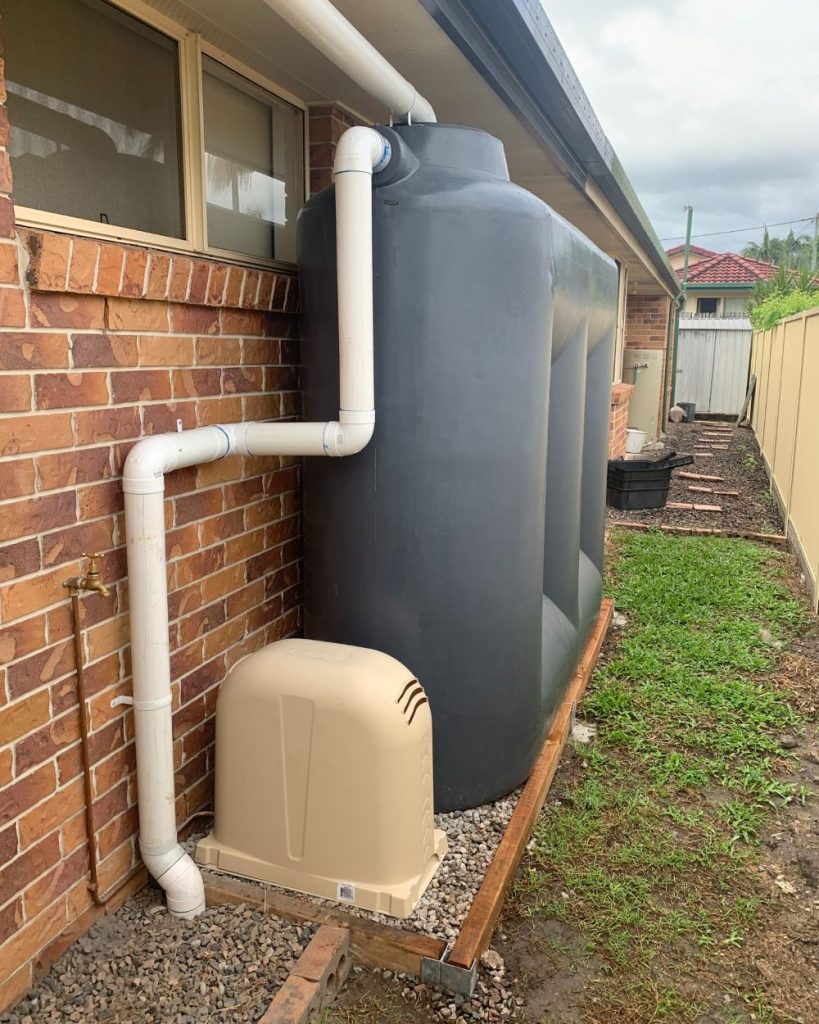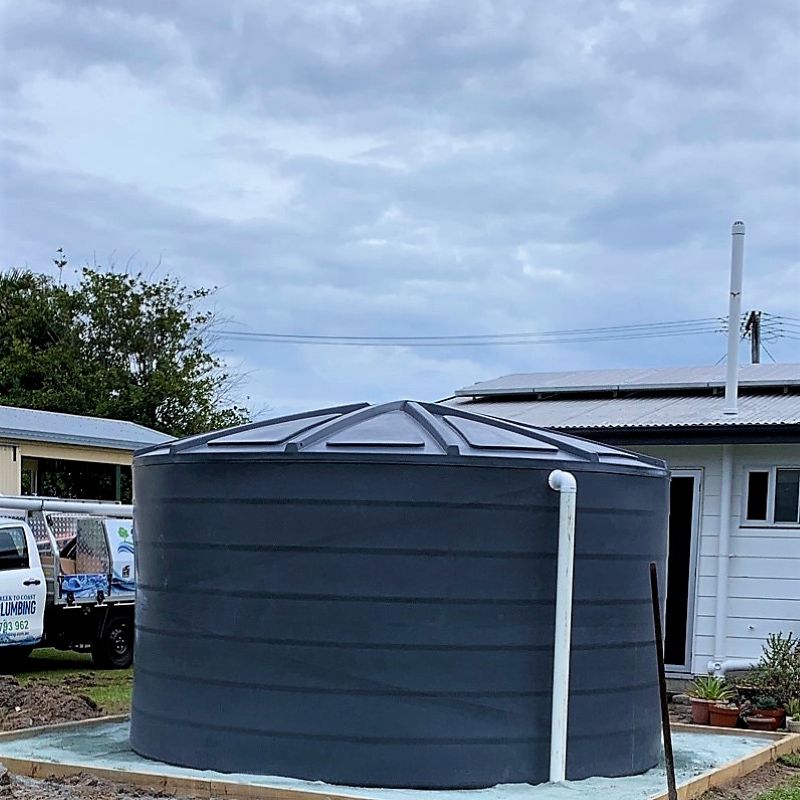Selecting the Perfect Rainwater Harvesting System to Optimize Water Conservation and Suit Your Lifestyle
In Queensland, an increasing number of homeowners are turning to rainwater tanks as a sustainable solution to lower their utility expenses, alleviate pressure on local water resources, and develop drought-resilient properties. A pivotal question that arises before investing in a rainwater tank is: What is your actual water requirement? Understanding your specific needs is crucial for making an informed decision.
At Creek to Coast Plumbing, we specialize in assisting homeowners to design effective rainwater harvesting systems. Determining the right tank size is the vital first step in this comprehensive process.

Maximize Your Rainwater Collection Efficiency for Sustainable Living
Evaluating your rainwater collection potential is a fundamental step towards effective water management. This potential is shaped by two significant factors: your home’s roof area and the average annual rainfall in your area. Understanding these elements is critical for efficiently planning your rainwater system.
Here are some specific metrics to consider:
- Generally, for every square meter of roof space, you can collect approximately 1 liter of water for every 1mm of rainfall.
- For a roof size of 200m² in a location receiving 1,200mm of rain per year, you could theoretically harvest 240,000 liters annually.
However, it’s essential to recognize that this scenario is idealistic. In practice, various factors like first flush systems, evaporation, roof slope, gutter configuration, and overflow will lead to some water loss.
We generally suggest planning for a collection efficiency of around 80–90% to accommodate these variances.
Define Your Intended Uses for Collected Rainwater
When planning your rainwater harvesting system, practical applications are key. Are you collecting rainwater exclusively for garden irrigation, or do you intend to utilize it for toilets, laundry, or throughout your entire household?
Here are some essential factors to evaluate:
Determining the Optimal Tank Size for Your Gardening Needs
If your primary goal is to nourish lawns, vegetable gardens, or flower beds, a small to mid-sized tank (2,000–5,000 liters) should suffice.
However, this largely hinges on your garden size and local rainfall trends.
In areas prone to brief but intense rain showers, investing in larger tanks may be necessary to capture maximum rainwater during these events.
Integrating Rainwater into Your Laundry and Toilet Systems
Homes that utilize rainwater for toilets and washing machines generally find that 5,000–10,000 liter tanks offer substantial benefits. These fixtures typically account for roughly 35–40% of indoor water usage, leading to significant savings over time.
It’s vital to incorporate a pump and the appropriate plumbing connections to integrate these systems into your home, a service that Creek to Coast expertly handles during our installation process.

Considerations for Comprehensive Home Water Supply
If your aim is to achieve complete self-sufficiency or supply rainwater to every outlet in your house, you will likely require 20,000 liters or more, depending on your household size. Larger tanks can also serve as a backup water supply for fire emergencies, during prolonged dry spells, or when entertaining guests.
Assess the Number of Residents in Your Household
A helpful guideline suggests providing about 150–250 liters per person per day when utilizing rainwater for general household tasks.
- For a couple: a 5,000–10,000 liter tank is typically adequate.
- For families of four or more: consider opting for 10,000–20,000 liters or larger to ensure you have enough supply.
The number of occupants in your home will directly impact how swiftly your tank empties, especially during dry spells when conserving water becomes essential.
Is Your Roof Area Sufficient for Effective Rainwater Harvesting?
The size of your roof is a critical factor in determining how much rainwater you can effectively collect.
A larger roof area enables greater water harvesting potential.
Additionally, the configuration of your roof plays a significant role. If your home features multiple roof sections that can direct rainwater into a single tank, we can design an efficient downpipe system to optimize water capture from all available surfaces.
For smaller homes or townhouses, slimline or under-deck tanks may be the most practical choice, and Creek to Coast can assist you in identifying the ideal solution tailored to your needs.

Essential Elements: Optimal Tank Placement, Guttering Systems, and Overflow Management
Successful rainwater harvesting involves much more than simply installing a tank.
An effective system requires:
- Robust, well-maintained gutters to avert blockages
- Leaf guards and first flush diverters to ensure water quality
- Overflow systems designed to safely divert excess water away from your home’s foundations
- A stable, level tank pad or stand for structural support
Creek to Coast Plumbing provides comprehensive rainwater system installations, including gutter enhancements, pump connections, stormwater management, and filtration systems to ensure your tank is secure and ready for use from day one.
How to Ensure Cleaner and Safer Rainwater for Household Use
We highly recommend implementing a whole-house rainwater filtration system, especially if you plan on using your harvested rainwater for more than just garden irrigation.
The Puretec Hybrid Plus systems, expertly installed by our qualified team, can effectively remove sediments, odors, tannins, bacteria, and adjust the water’s pH to mitigate copper leaching and pipe corrosion. Discover the extensive benefits of water filtration for your collected rainwater.
Making Informed and Strategic Choices for Your Rainwater Tank Selection
Choosing the right rainwater tank involves more than just picking the largest option available; it’s about aligning your system with your roof size, local rainfall patterns, and your specific water usage requirements.
At Creek to Coast Plumbing, we have been dedicated to assisting Queensland homeowners in establishing sustainable rainwater systems for over 30 years. From determining the optimal tank size and placement to delivering complete guttering and filtration solutions, we are committed to ensuring that you make the most of every precious drop of rainwater.
The Article: Choosing the Right Size Rainwater Tank for Your Queensland Home first appeared on https://writebuff.com
The Article Choosing the Right Size Rainwater Tank for Queensland Homes Was Found On https://limitsofstrategy.com

